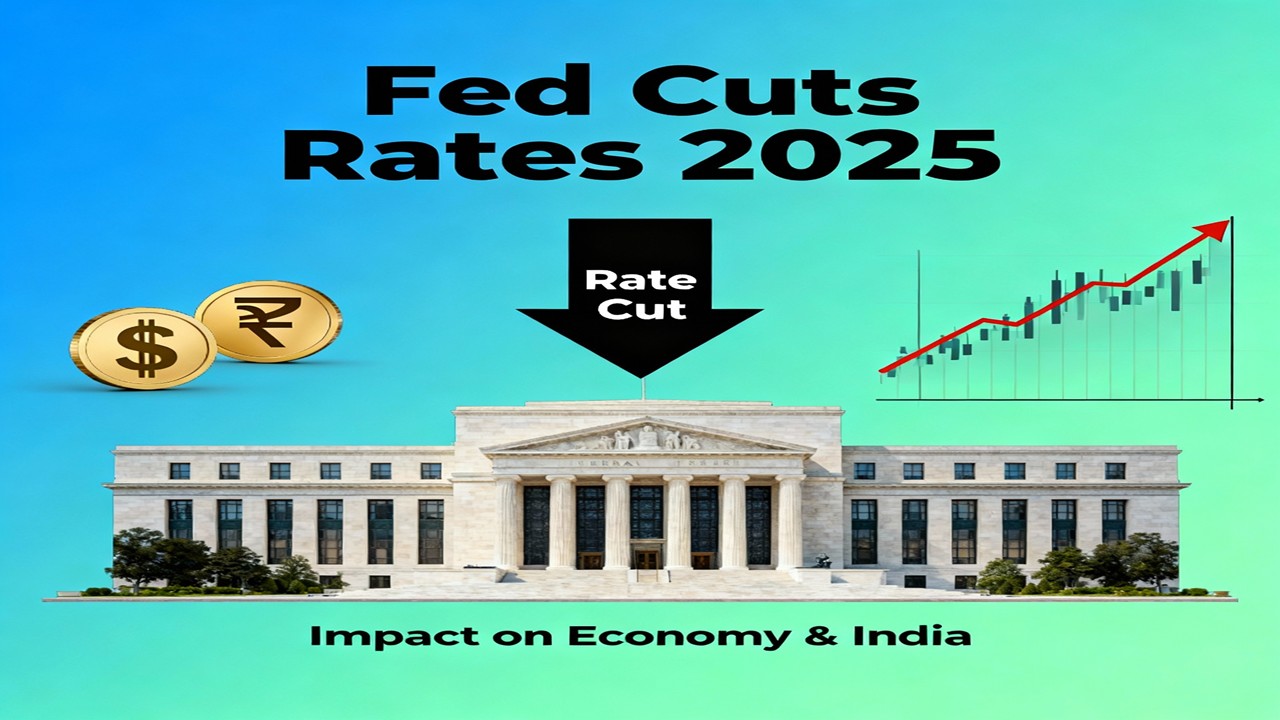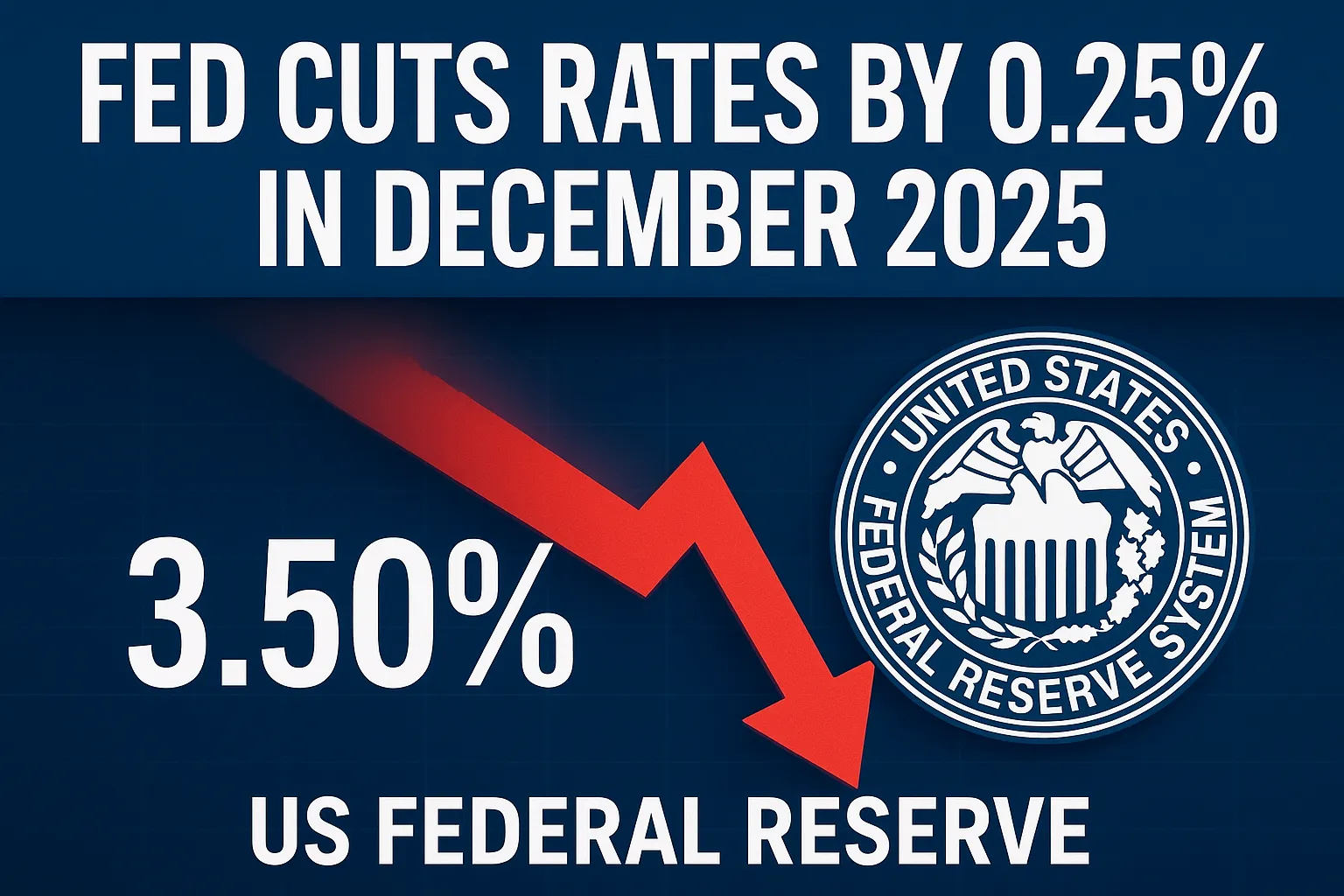
हिंदी में पढ़ने के लिए मेनू बार से हिंदी भाषा चयन करें।
The U.S. Federal Reserve (Fed) lowered its benchmark federal funds rate by 0.25% (25 basis points), bringing it down to 4.00%–4.25% from the earlier 4.25%–4.50%. Fed officials also signaled that more rate cuts may follow later this year if economic conditions remain the same.
Why the Fed cut rates — reasons and statement
The Fed decided to cut rates mainly because the job market is showing signs of weakness. Hiring has slowed, unemployment has ticked up slightly, and risks to employment are rising. Fed Chair Jerome Powell said this was a “risk-management” step — inflation is still above the 2% target, but protecting jobs was necessary.
One Fed governor, Stephen Miran, wanted a bigger 0.50% cut, but the majority voted for 0.25%.
Example: If companies stop hiring due to high borrowing costs, household spending weakens, and the economy slows faster. Cutting rates helps prevent that.
Immediate reaction in U.S. and global markets
- Stocks: U.S. equities showed mixed moves — some gains, some losses — as investors focused on Fed’s forward guidance.
- Bonds: U.S. 10-year Treasury yields dipped slightly, reflecting new expectations on future cuts.
- Dollar & Gold: The U.S. dollar saw some volatility; gold prices also moved as investors adjusted portfolios.
Example: Hedge funds quickly shifted portfolios, betting on more cuts later this year, causing short-term volatility in stocks and bonds.
Jobs vs. Inflation — why balance is critical
- Employment: Job growth is slowing, raising fears of recession if left unchecked.
- Inflation: Still hovering around 3%, above the Fed’s 2% target. Cutting too aggressively could fuel inflation again.
- That’s why the Fed stressed a “meeting-by-meeting” approach, watching new data before further action.
Example: If grocery prices rise again, the Fed might have to pause cuts despite weaker jobs data.
Impact on India and other emerging markets
- Rupee: Rate-cut expectations have already stabilized the Indian rupee. After the cut, short-term moves are expected.
- FII flows: Lower U.S. rates often push foreign investors toward emerging markets like India. If the Fed continues cutting, Indian stocks could see inflows.
- RBI stance: The Reserve Bank of India won’t blindly follow the Fed — it will consider domestic inflation and growth, but Fed moves add pressure.
Example: If the Fed cuts a total of 50–75 bps this year, Indian equities (Sensex, Nifty) may rise as global funds look for higher returns here.
Consumer and business impact
- Loans & EMIs: Not immediate, but if the Fed continues cutting, borrowing could get cheaper in coming months.
- Corporate loans: Companies may take cheaper loans, boosting investment.
- Savings & deposits: Deposit rates could fall, reducing returns on savings.
- Startups/tech firms: Easier credit could help growth projects.
Example: A small business in the U.S. may find bank loans slightly cheaper later this year, making expansion less costly.
Risks to watch ahead
- Jobs data: If employment weakens further, Fed could cut again. If jobs recover, cuts may pause.
- Inflation: A resurgence in inflation could derail the rate-cut cycle.
- Market sentiment: Stocks and bonds will remain volatile as investors react to every Fed signal.
- Global shocks: China’s slowdown, energy prices, or geopolitical issues could influence Fed decisions.
Conclusion
On September 17, 2025, the Fed cut rates by 0.25% for the first time this year. The goal: support the job market while keeping inflation in check. This step may bring relief to businesses and consumers, but the Fed will move carefully to avoid fueling inflation again.
For India and other emerging economies, this could mean stronger capital inflows and market gains, though volatility will remain high in the short term.
Source: FED




































































